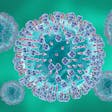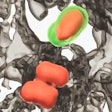
In a new study published in Nature, researchers from the Francis Crick Institute in London detail their discovery of aggressive lung cancer cells that can go “off grid” and build a standalone electric network.
The team analyzed human and mouse samples with small cell lung cancer (SCLC) to determine if certain electrical activity increases the strength of cancerous cells. Instead, they found SCLC cells are able to generate their own electrical activity by developing their own network within the tumor, essentially cutting off the body’s main electrical supply.
The genesis of this new network appears to stem from modified gene expression in aggressive cancer types, where cells shift from neuroendocrine (NE) to non-neuroendocrine (non-NE) and stimulate tumor development.
“We’ve identified a feature which makes these types of cancers more aggressive and harder to treat,” said co-lead author Paola Peinado Fernandez, PhD, in an organizational news release. “We think that this acquired autonomy of cancer cells might free them from the dependency of their environment.”
The research team noted that the NE and non-NE cells displayed a reciprocal relationship similar to that of neurons and astroglia — cells that support the body’s electrical function. The non-NE cells transported lactate, an alternative energy source, to help power separate electrical activity.
“We knew that some cancer cells can mimic neural behavior, but we didn’t know how developing an independent electrical network might impact the development of disease. By combining neuroscience and cancer research techniques, we’ve been able to look at this disease from a different perspective,” said Leanne Li, MD, PhD, head of Crick’s Cancer-Neuroscience Laboratory.
 Leanne Li, MD, PhDCrick Institute
Leanne Li, MD, PhDCrick Institute
Finally, the group observed molecular markers in patients with SCLC, which confirmed elevated electrical activity in cancer cells compared to surrounding healthy cells. Lactate distribution increased (per non-NE cell markers), likewise, as cancer progressed. This finding allowed researchers to distinguish fueling patterns of the different cell types and determine that the autonomous electrical activity of NE cells promotes tumor growth and expansion.
“There’s still a long way to go to understand the biological impact of this electrical activity and the specific disease mechanisms that make the tumor more aggressive and harder to treat,” Dr. Li said. “But we hope that in understanding the way these cancer cells are fueled, we can also expose vulnerabilities that could be targeted with future treatments.”
The research team hopes to apply this knowledge to other cancer types and examine new treatment options that target this property in SCLC.























